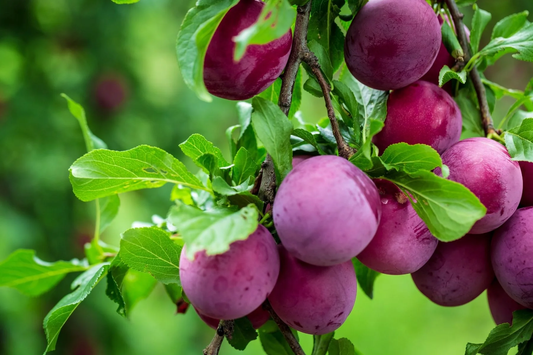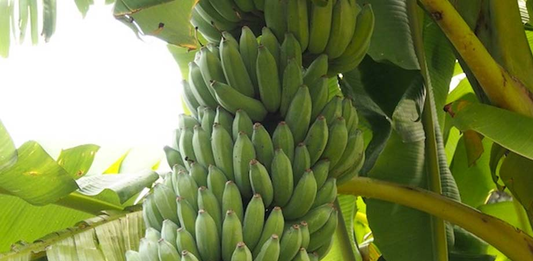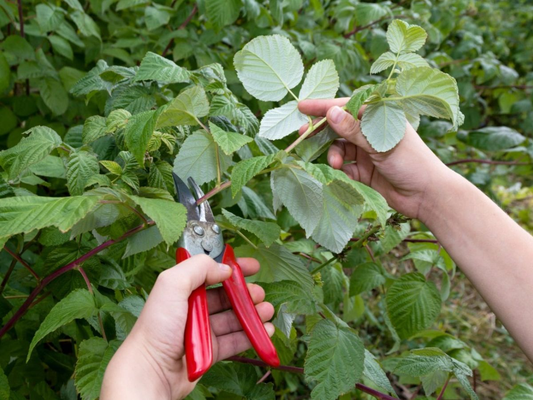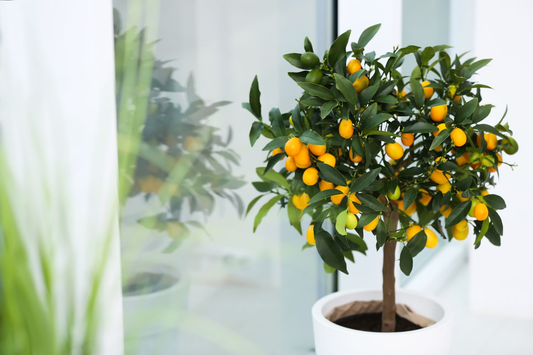Plants for Sunny Spots
Share
- 1. Introduction
- 2. Understanding Sunny Spots in Your Garden
- 3. Benefits of Planting in Sunny Spots
- 4. Key Factors to Consider When Choosing Plants for Sunny Spots
- 5. Best Flowering Plants for Sunny Spots
- 6. Best Trees for Sunny Spots
- 7. Best Shrubs for Sunny Spots
- 8. Best Ground Cover Plants for Sunny Spots
- 9. Tips for Care and Maintenance of Plants in Sunny Spots
- 10. Common Problems in Sunny Spots and How to Overcome Them
- 11. FAQ - Frequently Asked Questions
1. Introduction
Gardening in sunny spots can be both challenging and rewarding. While full sunlight exposure offers abundant energy for plant growth, it also presents unique difficulties. These areas can quickly become too hot or dry, especially during peak summer months, putting a strain on many plants. Therefore, choosing the right plants is essential to ensure thriving greenery, vibrant flowers, and healthy growth.
Understanding the importance of selecting plants suited to full sunlight exposure is key to overcoming the challenges of sunny spots. When choosing plants, consider their specific needs for:
- Sunlight tolerance
- Watering requirements
- Heat resistance
By carefully selecting plants that are adapted to sunny conditions, gardeners can create vibrant landscapes with minimal effort. The right plants for sunny spots can offer the following benefits:
- Vibrant flowers: Full sunlight encourages flowering plants to produce rich, bright blooms throughout the growing season.
- Low maintenance: Many sun-loving plants are hardy, drought-resistant, and require less frequent care once established.
- Increased plant resilience: Plants that thrive in sunny spots often become more resilient to pests and diseases due to their strong, sun-acclimated nature.
- Attracting pollinators: Sunny garden spots provide an ideal environment for pollinators like bees, butterflies, and hummingbirds to flourish, which supports a healthy ecosystem.
- Better growth rates: Sun-loving plants generally grow faster and more vigorously, especially in well-drained soils, thanks to abundant sunlight.
In this blog, we will explore the best plants for sunny spots, ensuring that you can transform those bright, sun-soaked areas into flourishing, beautiful garden spaces. Let's dive into how to make the most of your sunny spots with the right plant choices.

2. Understanding Sunny Spots in Your Garden
When it comes to gardening, understanding the specific needs of your plants is crucial, especially when it comes to selecting the right spot. A "sunny spot" refers to an area in your garden that receives direct sunlight for a majority of the day. It differs from partial or full shade in that sunny spots are bathed in light for at least 6 hours each day, often during midday, which is the most intense sunlight period.
In comparison, partial shade refers to areas that receive sunlight for only a few hours a day, usually filtered through trees or buildings, while full shade areas may receive no direct sunlight at all or very little. Plants in sunny spots are more likely to thrive if they are chosen for their ability to withstand direct sunlight exposure, which can be intense and prolonged.
Several key factors impact how plants perform in sunny spots:
- Soil type: Well-draining soils are crucial for sunny areas to prevent root rot from excess water accumulation.
- Heat tolerance: Plants in sunny spots must be able to handle high temperatures and intense sunlight without wilting or scorching.
- Water needs: Some sun-loving plants require frequent watering, while others are more drought-tolerant and can withstand dry conditions.
To assess your garden's sunlight exposure, follow these simple steps:
- Observe the garden throughout the day to note which areas receive direct sunlight and for how long.
- Check for any obstructions like trees, fences, or buildings that may block sunlight.
- Use a sunlight meter or simply mark spots with a chalk line to track exposure time more accurately.
3. Benefits of Planting in Sunny Spots
Planting in sunny spots offers numerous advantages, making it a desirable option for many gardeners. When strategically placed, plants that thrive in full sunlight not only flourish but also contribute to a healthier, more vibrant garden. Here are some key benefits of planting in sunny areas:
- Promotes robust growth and vibrant blooms: Sun-loving plants receive the energy they need to grow quickly and produce bright, colorful flowers. The abundant sunlight encourages stronger stems and a more vigorous overall plant structure.
- Attracts pollinators like bees and butterflies: Full sunlight areas often act as havens for pollinators, which are essential for the reproduction of many plants. The combination of flowering plants and sunlight helps to create an ecosystem that supports local wildlife.
- Often results in drought-resistant plants: Plants adapted to sunny environments are often more resilient to dry conditions. These drought-tolerant varieties are better suited for water-efficient gardening, which is especially useful in areas with fluctuating rainfall.
- Ability to grow a variety of plants that thrive in heat: Sunny spots allow you to grow a wide variety of plants, including heat-tolerant perennials, vegetables, herbs, and flowering plants. These plants are often better equipped to handle hot climates and will thrive in intense sunlight.
4. Key Factors to Consider When Choosing Plants for Sunny Spots
When selecting plants for sunny spots, it’s essential to consider several factors to ensure their success. By choosing plants that are well-suited to the specific conditions of a sunny garden, you can create a low-maintenance and thriving space. Here are the key factors to keep in mind when making your selections:
-
Water requirements:
- Drought-tolerant plants: Many sun-loving plants are naturally adapted to dry conditions and require minimal water once established. These plants can withstand long periods without rainfall and thrive in well-drained soil.
- High-water needs: Some sun-loving plants, such as certain flowers and vegetables, require more frequent watering to stay healthy and productive. Ensure your chosen plants match the available watering options in your garden.
-
Soil preferences:
- Well-drained, sandy soil: Many plants suited for sunny spots thrive in loose, well-drained soils like sandy or gravelly types. These soils prevent water from pooling and help avoid root rot.
- Rich, loamy soil: Some plants prefer fertile, nutrient-rich soils that retain moisture well. These types of soils are ideal for plants that need consistent water and nutrient availability.
- Plant size and space requirements: Consider the mature size of the plant and how much space it will need to grow. Ensure that the plants you choose won’t overcrowd each other and will have room to reach their full potential.
- Heat tolerance and resistance to sunburn: Some plants are more resilient to extreme heat and prolonged exposure to direct sunlight, while others may suffer from sunburn, characterized by browning or curling leaves. Select plants that are known to handle heat and sunlight well.
-
Maintenance level:
- Low maintenance: Many sun-loving plants require little to no care once established. These include hardy perennials, succulents, and certain native plants.
- High maintenance: Some plants may require regular pruning, staking, or pest control. Choose these if you have the time and desire to tend to them regularly.

5. Best Flowering Plants for Sunny Spots
When it comes to brightening up sunny spots, flowering plants are an excellent choice. Whether you prefer perennials that come back year after year or annuals that offer vibrant color for a single season, there are many sun-loving plants to choose from. Below are some of the best flowering plants for sunny spots, including both perennials and annuals:
Sun-loving Perennials
- Lavender: Known for its fragrant purple blooms, lavender is a hardy perennial that thrives in full sunlight. It’s perfect for sunny spots with well-drained, sandy soils. Lavender requires little maintenance once established and can tolerate dry conditions. Ideal growing conditions include full sun and dry, slightly alkaline soil. Lavender is also deer-resistant and attracts pollinators like bees and butterflies.
- Black-eyed Susan: This cheerful, easy-to-grow perennial is famous for its bright yellow petals and dark centers. Black-eyed Susans thrive in full sunlight and can tolerate various soil types. The plant grows well in dry to medium soil and attracts pollinators. Best varieties include 'Goldsturm' and 'Indian Summer.' They are low-maintenance and provide vibrant color throughout the summer.
- Coneflower: Coneflowers, or Echinacea, are drought-tolerant perennials that offer vibrant purple, pink, or white flowers. They are perfect for sunny spots with well-draining, sandy or loamy soil. Coneflowers are great for attracting pollinators, especially bees and butterflies. They bloom from summer to fall and are known for their resilience in dry conditions, making them perfect for low-maintenance gardens.
Annuals
- Marigolds: Marigolds are colorful, low-maintenance annuals that bloom in shades of yellow, orange, and red. These plants love full sunlight and thrive in well-drained soil. They are often used in garden borders and containers. Marigolds require moderate watering and produce a profusion of flowers from spring through summer. They also help repel pests, making them a great companion plant in vegetable gardens.
- Petunias: Petunias are popular annuals known for their wide variety of colors, including purple, red, white, and pink. They are ideal for sunny spots, as they thrive in full sunlight and well-drained, slightly acidic soil. Petunias bloom profusely from spring through summer and have a trailing growth habit, making them ideal for hanging baskets, containers, or as ground cover. They require regular watering, especially during hot summer months.
Table: Comparison of Flowering Plants for Sunny Spots
| Plant Name | Water Requirements | Flower Color | Size/Height | Blooming Season |
|---|---|---|---|---|
| Lavender | Low | Purple | 2-3 feet | Summer |
| Marigolds | Moderate | Yellow/Orange | 12-18 inches | Spring/Summer |
| Petunias | High | Various | 8-18 inches | Spring/Summer |
By selecting the right flowering plants for sunny spots, you can enjoy vibrant color, attract pollinators, and create a beautiful, low-maintenance garden. Whether you prefer the hardy nature of perennials like lavender and coneflower or the dazzling blooms of annuals like marigolds and petunias, there are plenty of options to brighten up your garden space.
6. Best Trees for Sunny Spots
Sunny spots are ideal for many tree species, offering the perfect conditions for vibrant blooms, striking foliage, and year-round interest. Below, we’ll explore some of the best trees for sunny spots, including both deciduous and evergreen varieties.
Deciduous Trees
- Crape Myrtle: Crape Myrtle is a popular deciduous tree known for its stunning summer blooms in shades of pink, red, purple, and white. It thrives in full sunlight and is well-suited for hot, dry conditions. This tree has a moderate growth rate, reaching heights between 10 to 30 feet. It sheds its leaves in the fall, offering a clean look in winter. While it requires regular watering during its establishment phase, it becomes drought-tolerant as it matures.
- Red Maple: Red Maple is another great option for sunny spots, offering brilliant red and yellow foliage in the fall. It prefers full sun but can tolerate partial shade. The tree grows to a height of 40 to 70 feet and has a low maintenance requirement. However, its large size may not be ideal for smaller gardens. While it provides excellent shade, it may drop leaves and seeds seasonally, making cleanup necessary.
Evergreens
- Juniper: Juniper is a versatile evergreen tree that thrives in full sun and is highly drought-tolerant once established. With a height range of 2 to 10 feet, it is well-suited for smaller spaces or as a ground cover. Juniper is low-maintenance, requiring minimal pruning, and is often used in landscaping for its attractive foliage and ability to provide year-round interest. However, it can become invasive in some areas, so careful management is recommended.
- Pine Trees: Pine trees are another excellent evergreen option for sunny spots, with numerous varieties suited for different garden sizes. Some popular varieties include the Eastern White Pine and the Scotch Pine. These trees can grow quite large, so it’s important to consider the space available. They provide dense shade and are tolerant of a variety of soil conditions. Pine trees require regular watering during dry spells but are generally low-maintenance once established.
Table: Comparison of Trees for Sunny Spots
| Tree Name | Sun Exposure | Height | Maintenance | Pros | Cons |
|---|---|---|---|---|---|
| Crape Myrtle | Full Sun | 10-30 feet | Moderate | Beautiful Blooms | Seasonal shedding |
| Red Maple | Full Sun | 40-70 feet | Low | Colorful foliage | Large size |
| Juniper | Full Sun | 2-10 feet | Low | Drought Tolerant | Can be invasive |
| Pine Trees | Full Sun | Varies by variety | Low | Year-round greenery | Can be large and space-demanding |
Choosing the right tree for sunny spots is essential to creating a landscape that thrives in full sunlight. Whether you opt for the vibrant blooms of Crape Myrtle or the drought tolerance of Juniper, these trees will offer lasting beauty and functionality in your garden.

7. Best Shrubs for Sunny Spots
Sunny spots in the garden can be an excellent location for planting shrubs that bring structure, vibrant colors, and a variety of textures. Here, we'll explore some of the best shrubs for sunny areas, including both evergreen and flowering varieties, that thrive in full sunlight.
Evergreen Shrubs
- Boxwood: Boxwood is a classic evergreen shrub known for its dense, compact growth and its ability to provide structure in the garden. Ideal for creating hedges or topiaries, it thrives in full sun and well-drained soil. Boxwood is low-maintenance, requiring only occasional pruning to maintain its shape. Its compact size (3-5 feet) makes it perfect for small gardens or edging along walkways. It is also tolerant of a range of soil types and is highly adaptable to different climates.
- Hydrangea: While traditionally associated with shaded spots, certain sun-tolerant varieties of Hydrangea thrive in full sunlight. These shrubs produce large, showy blooms in colors ranging from blue to pink. Hydrangeas prefer moderately moist, well-drained soil, and they perform best when watered regularly. Some sun-loving varieties, like the Paniculata Hydrangea, are perfect for sunny gardens. These shrubs grow to a height of 3-6 feet and require moderate care, including occasional deadheading and pruning to encourage new blooms.
Flowering Shrubs
- Forsythia: Forsythia is a hardy shrub known for its stunning yellow blooms that appear in early spring, making it one of the first plants to signal the arrival of the season. Forsythia thrives in full sun and can grow to a height of 6-10 feet. It is low-maintenance and only requires minimal pruning after blooming to keep it neat. Forsythia prefers moderately moist soil but can tolerate a variety of conditions once established.
- Rose of Sharon: Rose of Sharon is a sun-loving flowering shrub that produces vibrant, colorful blooms in shades of pink, purple, and white. It grows well in full sunlight and requires well-drained soil. This shrub grows to a height of 4-8 feet and is moderately low-maintenance, needing occasional pruning to maintain its shape. Rose of Sharon is also known for its ability to attract pollinators like bees and butterflies.
Table: Comparison of Shrubs for Sunny Spots
| Shrub Name | Flowering Color | Water Needs | Size | Care Level |
|---|---|---|---|---|
| Boxwood | - | Low | 3-5 feet | Low |
| Hydrangea | Blue/Pink | Moderate | 3-6 feet | Moderate |
| Forsythia | Yellow | Moderate | 6-10 feet | Low |
When choosing shrubs for sunny spots, it’s important to consider factors such as water needs, size, and maintenance level. Whether you're looking for the structure of Boxwood, the colorful blooms of Hydrangea, or the early spring blooms of Forsythia, these shrubs will thrive in sunny areas, adding beauty and variety to your garden.

8. Best Ground Cover Plants for Sunny Spots
Ground cover plants are perfect for sunny spots, providing both aesthetic appeal and functional benefits like weed suppression and erosion control. Here are three excellent ground cover options that thrive in full sun.
Creeping Thyme
- Low maintenance: Creeping Thyme is a resilient ground cover plant that requires minimal care. It thrives in dry, sunny spots and doesn't need frequent watering once established.
- Fragrant: In addition to its dense, green foliage, Creeping Thyme produces a lovely fragrance when in bloom, making it a sensory delight for any garden.
- Effective ground cover: Creeping Thyme forms a dense mat of leaves and flowers, effectively covering the ground and preventing weeds from taking root.
Sedum
- Drought-tolerant: Sedum is one of the best ground cover plants for dry, sunny locations. It stores water in its fleshy leaves, making it highly drought-resistant.
- Heat-loving: Sedum thrives in hot, dry areas and can tolerate a wide range of soil types, including poor, rocky soil.
- Colorful: Sedum varieties can provide beautiful foliage and flowers, which often turn red or yellow as the seasons change.
Clover
- Fast-growing: Clover is an excellent choice for quickly establishing ground cover, providing an instant green carpet.
- Low-maintenance: It requires minimal upkeep and is great for those looking for a no-fuss option. Clover is also a natural nitrogen fixer, improving soil quality over time.
- Ideal for lawns: Clover thrives in full sun and is a great alternative to traditional grass lawns, providing a soft, lush carpet.
Table: Ground Cover Plants for Sunny Spots
| Ground Cover | Benefits | Sun Exposure | Water Needs |
|---|---|---|---|
| Creeping Thyme | Fragrant, dense | Full Sun | Low |
| Sedum | Drought-tolerant | Full Sun | Low |
| Clover | Fast-growing | Full Sun | Moderate |
These ground cover plants are perfect for sunny areas, offering a variety of benefits from weed suppression to beautiful blooms. Whether you're looking for a fragrant, low-maintenance option like Creeping Thyme, a drought-tolerant ground cover like Sedum, or a fast-growing choice like Clover, each of these plants will thrive in sunny conditions with minimal care.
9. Tips for Care and Maintenance of Plants in Sunny Spots
Taking care of plants in sunny spots requires attention to their unique needs, particularly when it comes to water, soil, and temperature management. Here are some essential care tips to help your plants thrive in full sunlight:
Watering Techniques
- Morning watering: Watering plants early in the morning helps prevent water from evaporating too quickly and ensures that plants are hydrated before the midday heat.
- Deep watering: Water deeply rather than shallowly to encourage deep root growth. This helps the plants withstand drought and hot conditions better.
Mulching
- Moisture retention: Apply a layer of mulch around your plants to help retain moisture in the soil, reducing the need for frequent watering.
- Root protection: Mulch also acts as a barrier to protect the roots from intense sun exposure and prevent sunburn.
Fertilizing Schedule
- Balanced fertilizer: Use a balanced, slow-release fertilizer to provide your plants with consistent nutrients throughout the growing season. Fertilize in spring and again mid-summer.
- Avoid over-fertilizing: Too much fertilizer can harm plants, especially in hot conditions, by encouraging weak growth or excessive foliage.
Pruning and Deadheading
- Deadheading: Remove spent flowers regularly to encourage continuous blooming. This is especially important for flowering plants like Marigolds and Petunias.
- Pruning: Trim dead or damaged leaves and stems to promote healthy growth and maintain the plant’s shape.
Protecting Plants During Extreme Heat
- Shading when necessary: During heat waves, consider providing temporary shade for particularly sensitive plants using shade cloth or other protective materials.
- Watering frequently: During extreme heat, increase your watering frequency, especially for plants that have higher water needs.

10. Common Problems in Sunny Spots and How to Overcome Them
While sunny spots can be great for growing plants, they also present certain challenges. Here's how to spot and overcome common problems in full-sun environments:
Sunburn on Plants
- How to spot it: Sunburned plants often display brown, crispy edges on their leaves or white patches on the foliage. These areas are signs of intense sun exposure causing cellular damage.
- Treatment: To prevent sunburn, consider providing temporary shade during the hottest part of the day, especially for newly planted or delicate plants. Gradually acclimate plants to full sun exposure to build tolerance.
Drought Stress
- Signs of drought stress: Wilting, yellowing leaves, and dry soil are indicators that your plants may be suffering from insufficient water.
- Solutions: Water deeply and regularly, especially in hot weather. Use mulch to retain moisture and prevent evaporation. Choose drought-tolerant plants for areas with prolonged dry periods.
Pests and Disease
- How full sun affects immunity: While full sun can help reduce the risk of fungal diseases, it can also increase plant stress, making them more vulnerable to pests and diseases.
- Common pests: Aphids, spider mites, and whiteflies are more likely to infest plants in sunny spots. Regularly check plants for signs of pests and remove them manually or use insecticidal soap as needed.
Overcoming Heat and Drought Stress
- Proper watering: During extreme heat, increase watering frequency, ensuring that the soil remains moist but not soggy.
- Shading: Use shade cloth or other materials to protect plants from the intense midday sun when necessary.
11. Frequently Asked Questions (FAQ)
Here are some common questions and answers to help you take care of your plants in sunny spots:
Can plants really thrive in direct sunlight for 6+ hours a day?
- Answer: Yes, many plants are well adapted to full sun exposure and can thrive with the right care. Plants like Lavender, Marigolds, and Coneflowers are perfect examples of sun-loving plants.
How often should I water plants in sunny spots?
- Answer: Plants in sunny spots often need more water, especially during dry spells, but always check soil moisture first. Deep watering in the morning is recommended to help the plants stay hydrated through the day.
What are the best low-maintenance plants for sunny spots?
- Answer: Plants like Lavender, Sedum, and Juniper are perfect for sunny spots with minimal care. These plants are drought-tolerant, heat-resistant, and require less frequent maintenance.
Can I grow vegetables in sunny spots?
- Answer: Absolutely! Many vegetables like tomatoes, peppers, and herbs thrive in full sunlight. Sunny spots are ideal for growing these plants as they require at least 6 hours of sunlight to produce healthy yields.
How do I protect my plants from extreme sun exposure?
- Answer: Provide some temporary shade during heatwaves and ensure the plants are well-watered. Shade cloths or garden umbrellas can offer protection from the midday sun. Also, mulching helps to retain soil moisture and cool the roots.
Additional Resources
Houseplants with Beautiful Flowers




